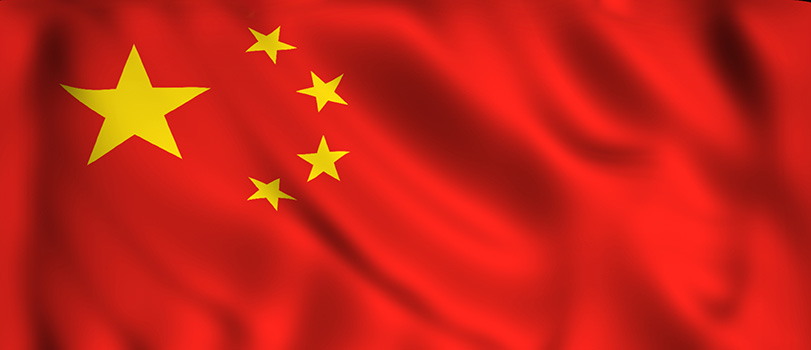©2025 Keller and Heckman, LLP
China Approves New Food-Contact Materials

On March 2, 2023, China National Health Commission (NHC) approved three new food-contact additives, expanded usage for four food-contact additives, three new resins, and expanded usage for one resin.
New Food-Contact Additives
- Cyclohexane, 1,1'-methylenebis[4-isocyanato-, homopolymer, cyclohexylamine-terminated (CAS No. 315207-86-4) is cleared for use in polycyclohexylenedimethylene naphthalate (PCN) plastics at a maximum use level of 0.35%. The specific migration levels (SMLs) are non-detectable (ND) for 1,1'-methylenebis[4-isocyanato-, where the detection limit (DL) is 0.01 mg/kg as isocyanate moiety and 0.05 mg/kg for bis(4-aminocyclohexyl)methane. The maximum permitted residual content (QM) is 1 mg/kg for 1,1'-Methylenebis(4-isocyanatocyclohexane), as isocyanate moiety.
- 2-[2-(2,4-diamino-6-hydroxypyrimidin-5-yl) diazenyl]-5-methylbenzenesulfonic acid (CAS No. 1021701-36-9) is cleared for use in plastics at a maximum use level of 0.5% and an SML of 0.05 mg/kg. The use temperature of plastic materials and articles containing this substance may not exceed 100°C and it may not be used in the production of food-contact materials and articles for infants and young children. The above restrictive requirements must be labeled according to the provisions of GB 4806.1.
- Copolymer of acrylamide, 2-methacryloxyethyltrimethyl ammonium chloride, itaconic acid, and N,N’-methylenebis acrylamide (CAS No. 214495-32-6) is cleared for use in paper and paperboard at a maximum use level of 1% (on a dry weight basis) and an SML of ND for acrylamide, where DL is 0.01mg/kg. Paper and paperboard materials and articles containing this substance may not be used for irradiation, and the use temperature may not exceed 121°C. The above restrictive requirements must be labeled according to the provisions of GB 4806.1.
Expanded Usage Food-Contact Additives
- Octadecyl 3-(3,5-di-tert-butyl-4-hydroxyphenyl) propionate (CAS No. 2082-79-3) is cleared for use in coatings and coating layers at a maximum use level of 0.5% and an SML of 6 mg/kg. The application rate of coatings containing this substance must not exceed 10 g/m2. The above restrictive requirements must be labeled according to the provisions of GB 4806.1.
- Napthalensulfonic acid, polymer with formaldehyde, sodium salt (CAS No. 9084-06-4; 36290-04-7) is cleared for use in acrylonitrile butadiene styrene (ABS) plastic at a maximum use level of 0.12% and an SML of 15 mg/kg (as formaldehyde)
- Fatty acid esters of C1~C18 mono- and poly-fatty alcohols is cleared for use in plastics at a maximum use level of 0.1%. Plastic materials and articles containing this substance may not be used in the production of food-contact materials and articles for infants and young children. The above restrictive requirements must be labeled according to the provisions of GB 4806.1.
- Silane, dichlorodimethyl-, reaction products with silica (CAS No. 68611-44-9) is cleared for use in adhesives (direct contact with foods) and in inks (indirect contact with food) at a maximum use level of 0.002% (on a dry weight basis) in adhesives and 4% (on a dry weight basis) in ink. Adhesives and inks containing this substance may not be used in the production of food-contact materials and articles for infants and young children. The above restrictive requirements must be labeled according to the provisions of GB 4806.1.
New Resins
- Carbon monoxide-ethylene-propylene terpolymer (CAS No. 88995-51-1) is cleared for use in plastics at dosage as necessary. Plastic materials and articles containing this substance may not be used in the production of food-contact materials and articles for infants and young children. The above restrictive requirements must be labeled according to the provisions of GB 4806.1.
- 4-Ethylphenol, m-cresol, p-cresol and 4-tert-butylphenol polymers with formaldehyde (CAS No. 68957-28-8) is cleared for use in coatings and coating layers at a maximum use level of 62% (as painting formula). The SMLs are 0.05 mg/kg (4-tert-butylphenol) and 15 mg/kg (as formaldehyde). The use temperature of coating and coating layers containing this substance may not exceed 130°C and it may not be used in the production of food-contact materials and articles for infants and young children. The above restrictive requirements must be labeled according to the provisions of GB 4806.1.
- Polymer of ethylene glycol, 2,2-dimethyl- 1,3-propandiol, terephthalic acid, isophthalic acid, adipic acid and itaconic acid (CAS No. 1041633-99-1) is cleared for use in coatings and coating layers and in adhesives (direct contact with food) at a maximum use level of 20% (on a dry weight basis). The SMLs are 30 mg/kg (as ethylene glycol), 0.05 mg/kg (2,2-dimethyl- 1,3-propandiol), 7.5 mg/kg (as terephthalic acid), and 5 mg/kg (as isophthalic acid). Coatings and adhesives produced from this substance are limited to filing at room temperature and for long-term storage at room temperature (including hot filling and pasteurization at T≤70°C, t≤2h, or T≤100°C, t≤15min). The above restrictive requirements must be labeled according to the provisions of GB 4806.1.
Expanded Use for Resins
- Isophthalic acid, polymer with 1,3-benzenedimethanamine and hexanedioic acid (CAS No. 28628-75-3) is cleared for use in plastics at dosage as necessary. The SMLs are 5 mg/kg (as isophthalic acid) and 0.05 mg/kg (1,3-benzenedimethanamine). The thickness of the plastic film produced from this substance may not exceed 50 μm, and the use temperature may not exceed 121°C. The above restrictive requirements must be labeled according to the provisions of GB 4806.1.